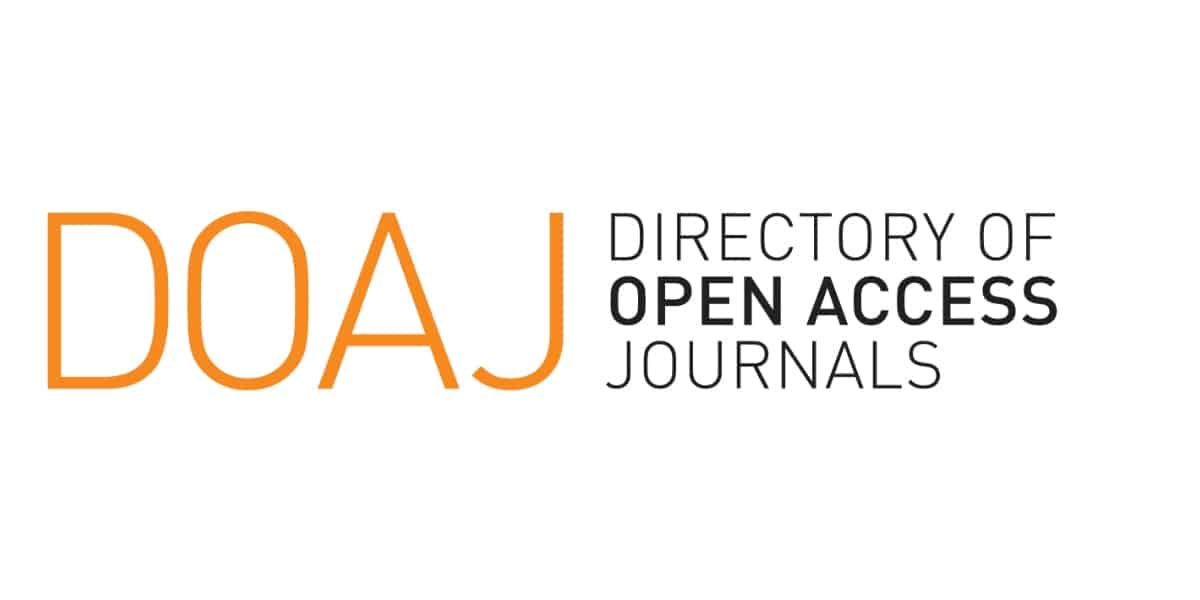Adsorption of Pb(II) Ions Using Residual Extract of Alginate from Sargassum sp.
Keywords:
lead, adsorption, adsorbent, residue, extraction, seaweedAbstract
Lead ion is one of the environment’s main pollutants. Lead ions have carcinogenic and toxic effects and, therefore dangerous to the human body. This research was conducted to determine the ability of alginate extraction residue from Sargassum sp.’s ability as lead ion adsorbent. The characterization of this adsorbent was done using FTIR (Fourier Transform Infrared) and SEM-EDS (Scanning Electron Microscopy-Energy Dispersive Spectroscopy). The optimization of this adsorbent was carried out toward some parameters, such as pH, adsorbent’s mass, Pb(II)’s initial concentration, and contact time. The result showed that the optimum condition can be reached if the contact between the adsorbent and adsorbate was done using 0,025 grams of adsorbent in 25 ml of pH 5 Pb(II) (200 ppm) solution, using 5 minutes contact time. The adsorption process follows the Langmuir isotherm model with a maximum capacity of 416,6667 mg.g-1. The result of the kinetics study showed that the adsorption follows a pseudo-second-order kinetics whilst the thermodynamics study showed that the adsorption process is exothermic with the value of ΔHᵒ = -4,51 kJ.mol-1, and the value of ΔSᵒ = -0,038 kJ.mol-1.K-1.
References
[1] Brass, G. a. (1981). Air Pollution Control. New York: John Willey & Sons.
[2] Ito, A., Aizawa, J., Morinaga, K., Umita, T., & Takachi, T. (2000. 751-758.). Removal of heavy metals from anaerobically digested sewage sludge by a new chemical method using ferric sulfate. (Water Res).
[3] El Atouani, S. B. (2016). The invasive brown seaweed Sargassum muticum as new resource for alginate in Morocco: Spectroscopic and rheological characterization. Vols. 64 (3).
[4] Hu, J. G. (2014). Effects of alginate on frozen-thawed boar spermatozoa quality, lipid peroxidation and antioxidant enzymes activities.
[5] Aliste, A. V. (2000). Radiation effects on agar, alginates and carrageenan to be used as food additives. Radiation Phys. Chem.(57 (3)), 305–308.
[6] Van de Velde, F. L. (2002). Carrageenan: a food-grade and biocompatible support for immobilisation techniques. 344 (8), 815–836(Adv. Synth. Catal.).
[7] Silva, K. C.-L. (2013). Olive oil and lemon salad dressing microencapsulated by freeze-drying. 50(2)(LWT-Food Sci. Technol.).
[8] Rahim, S. C. (2015). Design and evaluation of effervescent floating tablets based on hydroxyethyl cellulose and sodium alginate using pentoxifylline as a model drug. Theraphy 9(Drug Design Develop).
[9] Jain, D. B.-S. (2014). Effects of alginate on frozen-thawed boar spermatozoa quality, lipid peroxidation and antioxidant enzymes activities. 147(3)(Anim. Reprod. Sci. 147 (3)).
[10] Kim, J. P.-H. (2017). Alginate/bacterial cellulose nanocomposite beads prepared using Gluconacetobacter xylinus and their application in lipase immobilization. 157, 137–145(Carbohyd. Polym).
[11] Al-Enazi, T. N. (2016). Disinfection of alginate and addition silicon rubber-based impression materials. 8(1), 44-48(Int. J. Stomatol. Occlusion Med).
[12] Demajo, J. C.-S. (2016). Effectiveness of disinfectants on antimicrobial and physical properties of dental impression materials. 29 (1), 63–67(Int. J. Prosthodontics).
[13] Venkatesan, J. B. (2015). Alginate composites for bone tissue engineering: a review. 72, 269–281(Int. J. Biol. Macromol).
[14] Venkatesan, J. J. (2015). Development of alginate-chitosan-collagen based hydrogels for tissue engineering. 5 (6), 458–464(J. Biomater. Tissue Eng).
[15] Venkatesan, J. N.-K. (2014). Role of Alginate in Bone Tissue Engineering. 73, 45–57(Adv. Food Nutr. Res).
[16] Agarwal, T. N. (2015). Calcium alginatecarboxymethyl cellulose beads for colon-targeted drug delivery. 75, 409–417(Int. J. Biol. Macromol).
[17] Boekhoven, J. Z. (2015). Alginate–peptide amphiphile core–shell microparticles as a targeted drug delivery system. 5 (12), 8753–8756(RSC Adv).
[18] Bertagnolli, C. (2013). Chromium Biosorption using the residue of alginate extraction from Sargassum Filipendula.
[19] Cardoso, S. L. (2017). Biosorption of toxic metals using the alginate extraction residue from the brown algae Sargassum filipendula as a natural ion-exchanger.
[20] Al, K. A. (2000). Thermodynamics and Kinetics study of Lead Ions Adsorption on Iraqi Bentonite. University of Baghdad, Baghdad, Iraq, 5-8.
Downloads
Published
Issue
Section
License
Copyright (c) 2024 Rusnadi, Eucharistein Gratia Wibisono, Dhiya Haniifa Putri, Andi Radhiatul Hilmah Alimin (Author)

This work is licensed under a Creative Commons Attribution 4.0 International License.
















